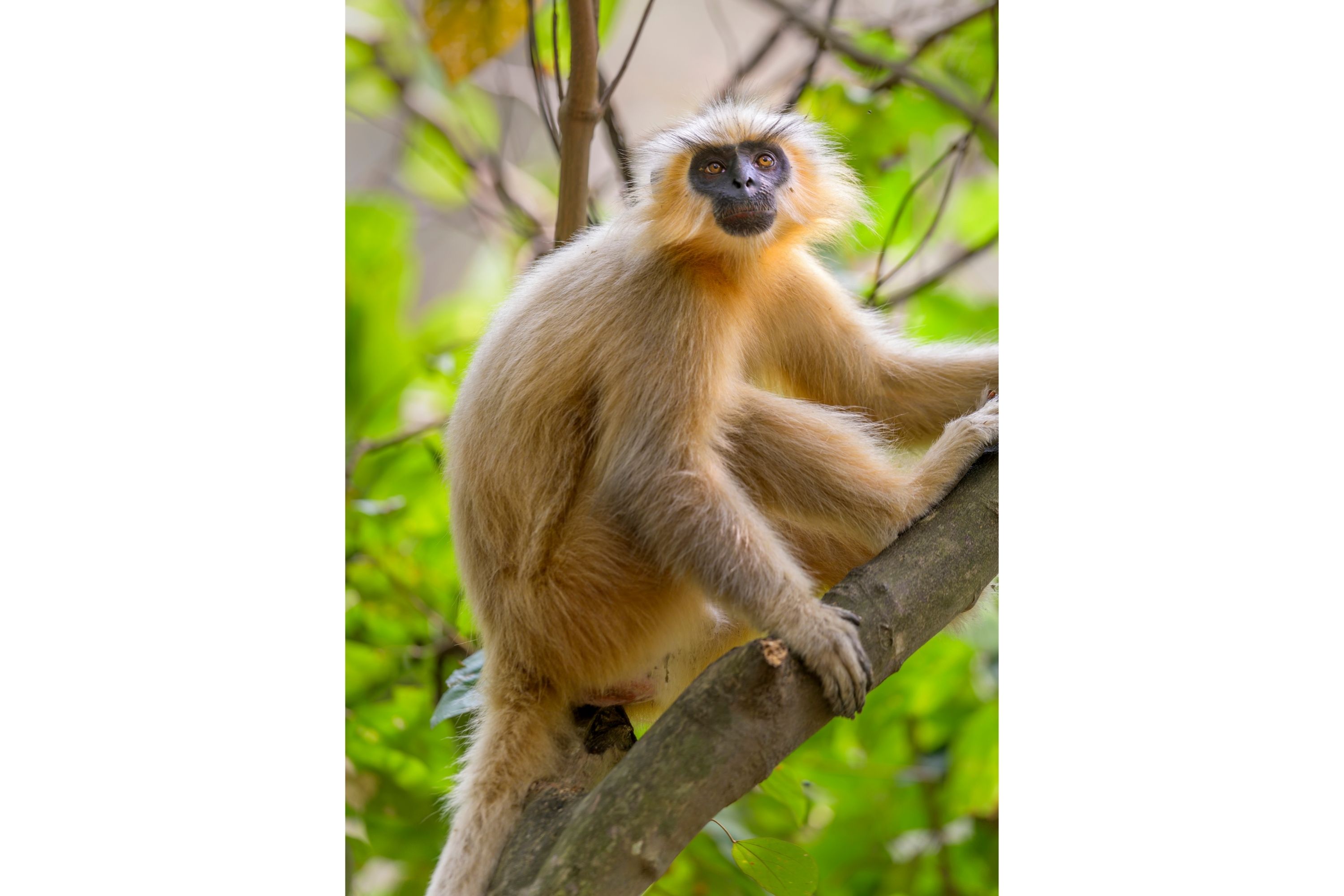Gee's golden langur
(Trachypithecus geei)

Description
Gee's golden langur (Trachypithecus geei), also known as simply the golden langur, is an Old World monkey found in a small region of Western Assam, India and in the neighboring foothills of the Black Mountains of Bhutan. Long considered sacred by many Himalayan people, the golden langur was first brought to the attention of the western world by the naturalist Edward Pritchard Gee in the 1950s. Adult males have a cream to golden coat with darker flanks while the females and juveniles are lighter. It has a black face and a long tail up to 50 cm (19.69 in) in length. It lives in high trees and has a herbivorous diet of ripe and unripe fruits, mature and young leaves, seeds, buds and flowers. The average group size is eight individuals, with a ratio of several females to each adult male. It is one of the most endangered primate species of India and Bhutan. The coat of the adult golden langur ranges from cream to golden, on its flanks and chest the hairs are darker and often rust coloured while the coats of the juveniles and females are lighter, silvery white to light buff.The coat changes color seasonally, from white or cream coloured in the summer to dark golden or chestnut in the winter. Their long whiskers to protect their eyes from rain during monsoon. The golden langur has a black face and large whorl of hair on its crown. Gee's golden langur exhibits sexual dimorphism. Males are larger and more robust than females. Adult males weigh 10.8 kilograms (24 lb) on average and adult females weigh 9.5 kilograms (21 lb). The length of the head and body ranges from 50–75 centimetres (20–30 in),while the relatively long tail is 70–100 centimetres (28–39 in) in length. Gee's golden langur is found in an area of approximately 30,000 square kilometres (12,000 sq mi), much of which is unsuitable habitat,bounded on the south by the Brahmaputra River, on the east by the Manas River, on the west by the Sankosh River, in Assam, India, and on the north by the Black Mountains of Bhutan.These biogeographical barriers are believed to have led to the radiation of species from the closely-related capped langur (Trachypithecus pileatus).In 1988, two captive groups of Gee's golden langur were released into the wild in Tripura state in north-eastern India, an area outside of their natural range.One of the groups, released into Sepahijala Wildlife Sanctuary, survives and has adapted to the wild
Taxonomic tree:







